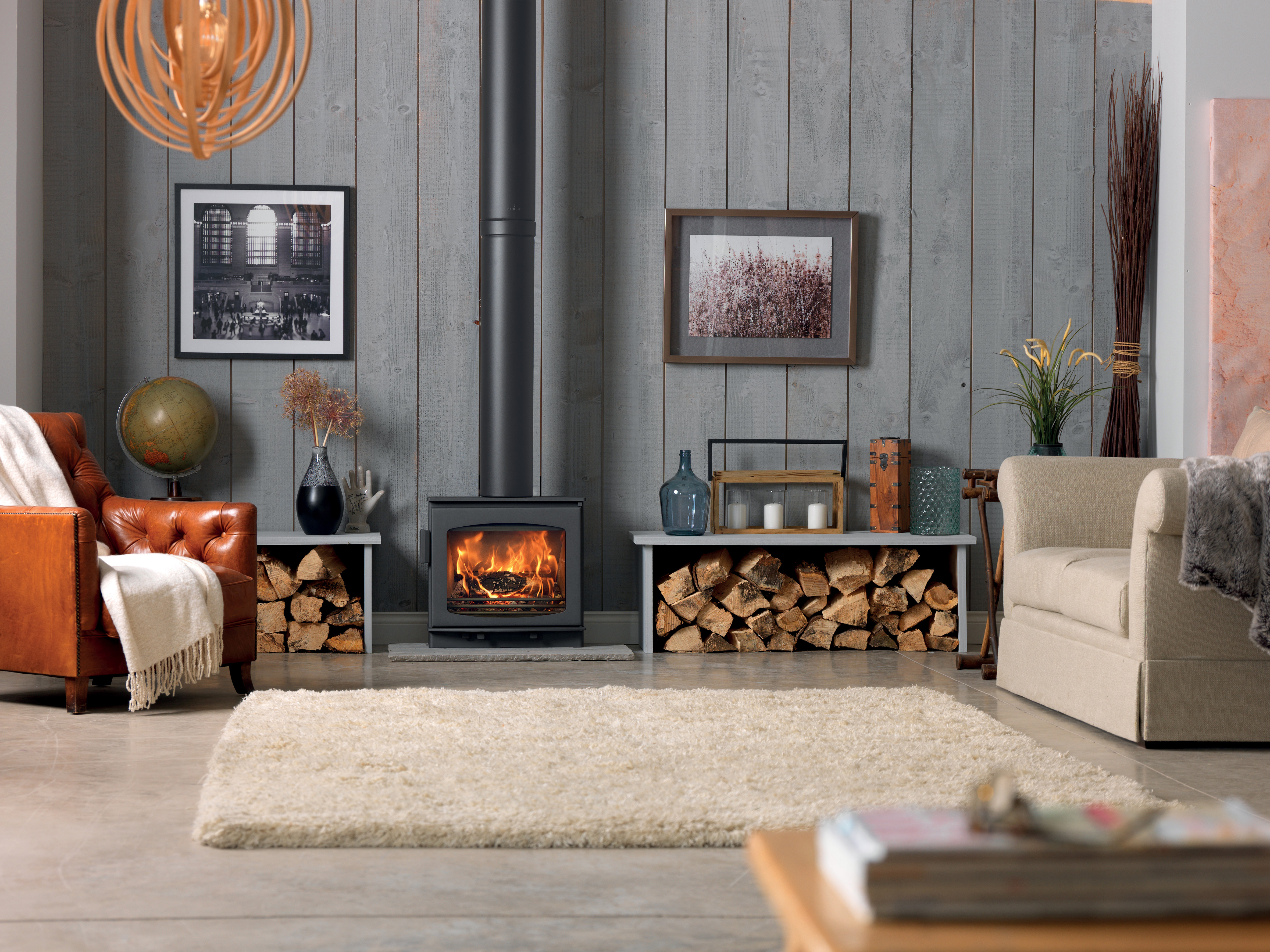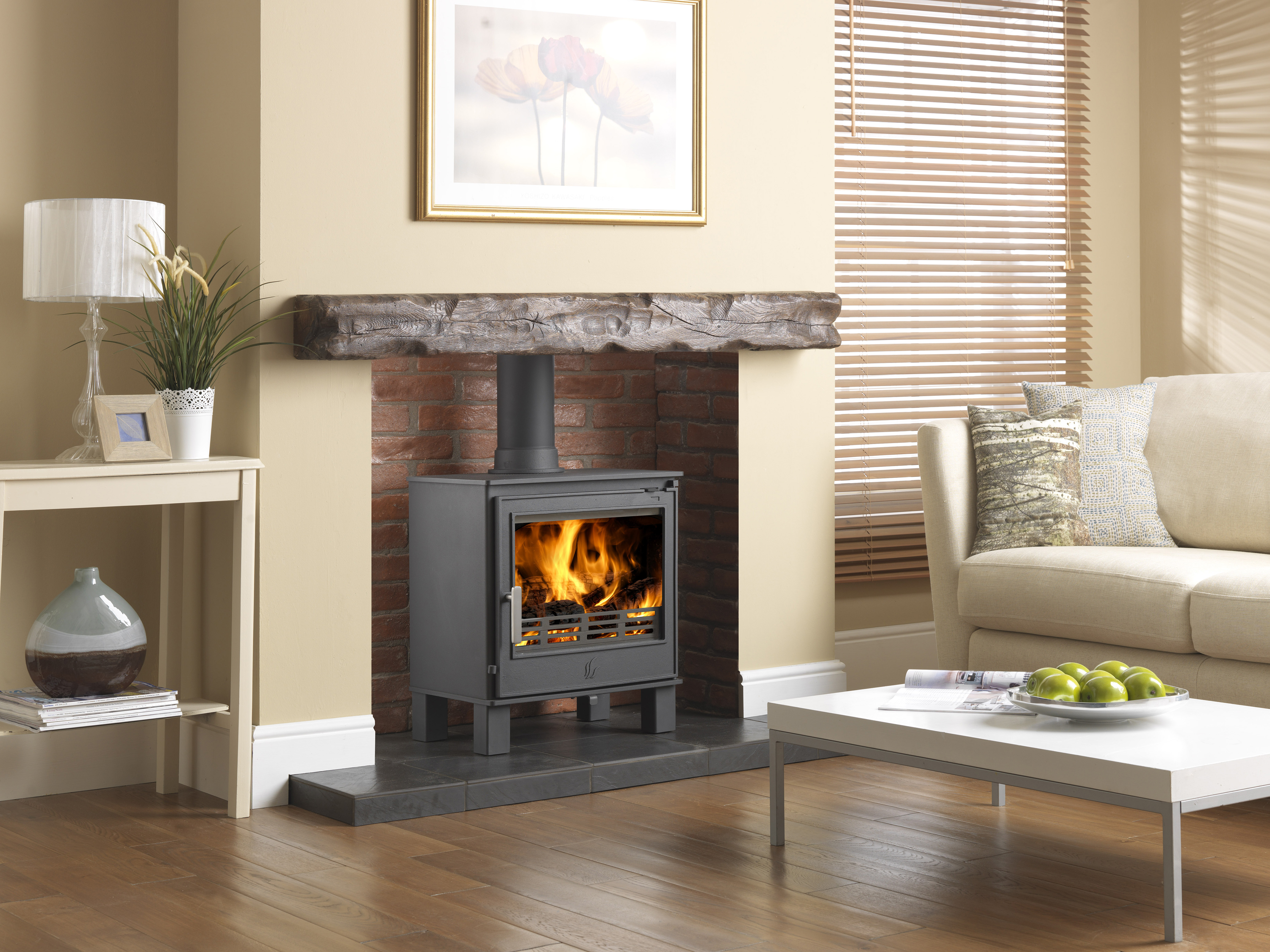How to Replace a Gas Fire With a Woodburner
From removing your gas fire to installing a woodburner, here's what you need to consider when replacing old for new

It is becoming a common wish these days to covert an existing gas fire into a woodburning stove, and there are several reasons for this. Perhaps one of the biggest reasons is the cuts that can be made on your fuel bills. Whilst gas prices are rising, wood is comparatively cheap. According to Forest Fuels’ fuel comparison table (forestfuels.co.uk), based on the net calorific value of the fuel, and assuming a standard-size tipped delivery of 25-30 cubic metres of woodchip, hardwood firewood comes in at £0.035/kWh, woodchip at £0.03/kWh, loose wood pellets at £0.047/kWh, bagged wood pellets at £0.055/kWh — compared to mains gas at £0.061/kWh. Then there are the benefits that swapping gas for wood as a heat source can offer the environment. Burning wood or wood pellets offers a good, sustainable source of energy compared with gas, which, as we are regularly being told is not going to last forever, or even the foreseeable future.
Removing your gas fire
You will need to call in the services of a Gas Safe Register engineer to disconnect the gas and to cap off the connection. They should present you with a receipt and form to give to your household insurance provider. The work and cost involved in the removal of the fireplace will depend on the type of fireplace you are working with. It may simply be a case of using the opening you already have. However, if you are removing a cast iron, stone or concrete fireplace you might find yourself faced with years’ worth of rubble and debris that will need to be disposed of before the new opening is constructed — and this could cost hundreds of pounds.
Installing the new stove
Although it is recommended that a HETAS-registered installer is called in to fit your new stove and ensure your chimney is properly lined, there is nothing to say that a competent DIYer cannot have a go — although you will need to notify Building Control and pay the appropriate fee. Do think through your decision to install a stove yourself. “An unapproved installation could cause injury to person or property, may invalidate household insurance or the stove’s warranty, and homeowners could be liable to a fine,” warns David Knox of Stovax.
Getting Your Chimney Ready
Your chimney should always be swept before a new stove is installed. Open fires put around 80% of their heat up the chimney — however, with a stove, only 15% of the heat goes up the chimney as they work at a higher efficiency. Although this is a benefit, it means that the smoke going up the chimney is at a far cooler temperature than with an open fire. The cooler gases condense on the inside of the chimney forming tar deposits. Most chimneys used with gas fires are fitted with Class 2 flexible liners which are lightweight and single skin. For a woodburning stove, a Class 1 twin skin liner should be used. The existing liner is pulled out from the top of the chimney before the new one is dropped down. This leaves the liner hanging down into the chimney. It is then connected to a flexipipe adaptor which emerges from a hole in the register grate which you should have fitted. This in turn connects to the flue pipe that is inserted into the flue collar in the stove.
(MORE: Burning Logs for Heating)

Which stove?
Heat Output: The stove you can choose will depend on two main things. The first is the heat output requirements of the room or area you wish to heat. You can either call in the services of a specialist to visit your home and recommend the right stove for you, or use an online heat calculator such as that on Stoves Online’s website (stovesonline.co.uk). The heat output of woodburning stoves is measured in kW. A kW is around 3,400 BTUs and the kilowatt calculator on the above website – which is also packed full of other useful information on stoves in general – will allow you to enter the dimensions of your room and obtain a guide to what the heat output of your stove should be. “As a rough guide, you will need 1kW to comfortably heat every 14 cubic metres of space,” says Stovax’s David Knox.
(MORE: Log burning stovesbuying guide)
Bring your dream home to life with expert advice, how to guides and design inspiration. Sign up for our newsletter and get two free tickets to a Homebuilding & Renovating Show near you.
The Right Size: The next factor you will need to take into consideration is the size of stove you will be able to install. The size of your fireplace will, to a certain extent, dictate the stove you can choose and although there is nothing set out in the Building Regulations, it is recommended that there is a minimum distance of 150mm either side of the stove within the opening, and 300mm above. This allows for plenty of air to circulate around the stove and carry the heat around the room. If the stove you have your heart set on is a little on the large side for your opening, John Nightingale from Stoves Online suggests bringing it out slightly from the fireplace to allow more space surrounding it. If you do this, bear in mind that Building Regulations state that there must be a minimum of 300mm of non-combustible material in front of the stove to act as a hearth. David Knox advises that it is always best to have a site visit from a retailer before choosing a stove. “They will be able to cover factors such as Building Regulations and flueing systems, but they will also appreciate local idiosyncrasies like prevailing winds, insulation, double glazing and how the chimneys in the area were constructed,” says David.
Natasha was Homebuilding & Renovating’s Associate Content Editor and was a member of the Homebuilding team for over two decades. In her role on Homebuilding & Renovating she imparted her knowledge on a wide range of renovation topics, from window condensation to renovating bathrooms, to removing walls and adding an extension. She continues to write for Homebuilding on these topics, and more. An experienced journalist and renovation expert, she also writes for a number of other homes titles, including Homes & Gardens and Ideal Homes. Over the years Natasha has renovated and carried out a side extension to a Victorian terrace. She is currently living in the rural Edwardian cottage she renovated and extended on a largely DIY basis, living on site for the duration of the project.

